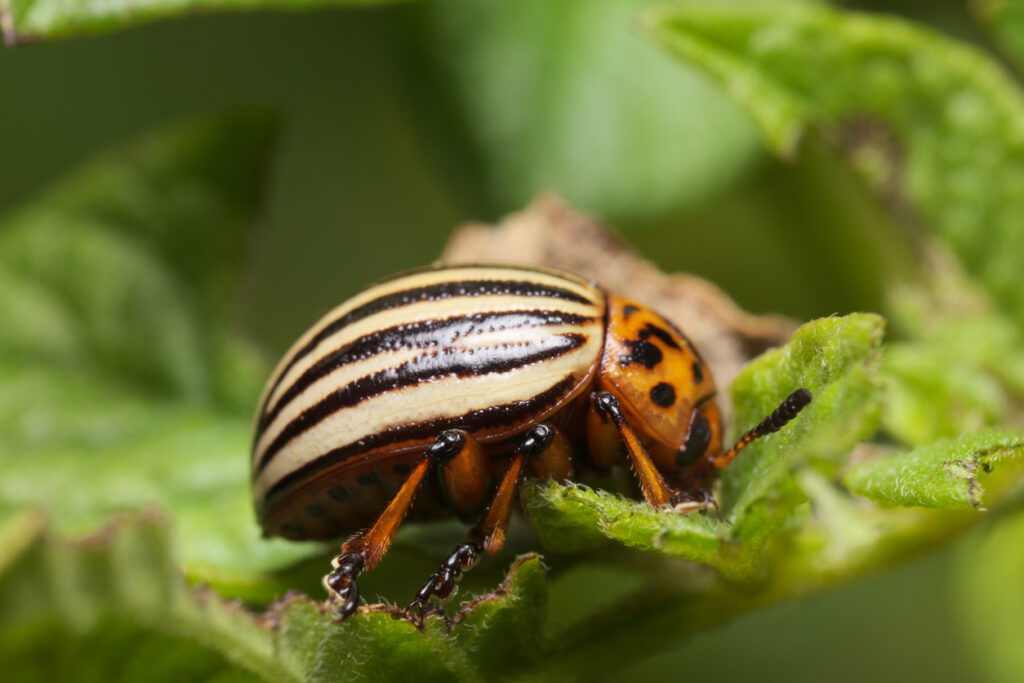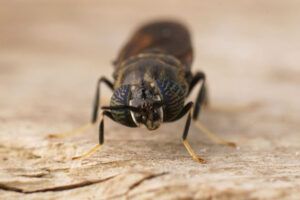If traditional pesticides are blunt instruments for killing pests, RNAi (RNA interference) is the polar opposite, says Dr. John Husnik, CEO at Vancouver-based Renaissance Bioscience. “It’s exceptionally precise.”
By using RNA molecules (nucleic acids that play essential roles in gene expression and regulation) to interfere with (or more accurately target and destroy) specific mRNA molecules (messenger molecules) in pests, RNAi can zap insects without damaging soil, plants, or surrounding wildlife, says Husnik.
“It’s a very environmentally friendly solution with the potential to be very broad based.”
RNAi is not a new concept in crop protection. But what makes Renaissance Bioscience stand out, says Husnik, is its unique delivery mechanism for RNA—baker’s yeast—which protects RNA and enables a biological input to be stored at ambient temperatures for lengthy periods, a potential gamechanger. When plant pests such as Colorado potato beetles start munching on crops that have been sprayed with the yeast, the RNA acts with laser accuracy to disable them.
“RNA molecules are sensitive to degradation, probably not as much as mRNA (messenger RNA), but still, RNA is sensitive,” says Husnik. “The big problem has always been delivery. How do you prevent RNA from being degraded quickly in the field? We think that marriage between yeast and RNA is what solves a lot of those problems.
“It’s a simple and elegant solution. Production can be easily scaled, and the downstream processing is simple: we just inactivate the yeast and spray dry it. It can be stored at ambient temperatures and very hot temperatures for long periods, and it doesn’t lose its efficacy if you mix it with other crop inputs such as herbicides or fungicides or adjuvants. We tested it with a series of these inputs individually and then we just threw them all into one big mix and there was zero degradation after 72 hours.”
The only caveat, he says, is that the system only works with chewing insects. “With sucking insects that have a proboscis, it won’t really work.”

‘We’ve tested up to four different individual RNA molecules in the same yeast cell’
Renaissance Bioscience—which first hit the headlines by making yeasts used in acrylamide reduction—initially targeted the Colorado potato beetle with a single RNA molecule but has since evolved its approach to produce two RNA molecules in a single yeast cell targeting two different essential genes, says Husnik.
“We can see that that works much better, we get much quicker killing and we can show high levels of mortality, not only in the larval stages, but also pupal and adult stages.
“In the laboratory, we’ve tested up to four different individual RNA molecules in the same yeast cell, and we could probably go to five or six. We could even potentially have two RNA molecules going after insect species one, and two going after insect species two, all in the same yeast cell.
“Or you could make two different yeast strains, each with four different genes and go after multiple things because you can mix those two yeasts together and spray them, so that flexibility is really important.”
Next generation tech enables 8-fold increase in RNA
While any molecular biologist could genetically engineer microbes to produce RNA, he observes, Renaissance Bioscience is the only company he’s aware of that’s actually doing it in yeast, because it has been able to produce high enough levels to make it commercially viable.
“Anyone can put a construct in a yeast cell that’s going to make double stranded RNA. You could teach high school students how to do that. The problem is that it wouldn’t be a viable commercial product. That’s where our expertise in being yeast bioengineers comes in so we get very high levels.”
The firm’s current IP “precludes others from doing this [producing double-stranded RNA for crop protection in] yeast. But if you want to make double stranded RNA through chemical synthesis that doesn’t infringe on other people’s IP, or if you wanted to produce it in bacteria, go for it.
“We are also developing a new method which will be able to deliver mRNA, single stranded RNA, in yeast, which will really broaden our scope. We’re doing lab trials with this newer technology and when combined with what we already have, which is already commercially viable, it gives us an eight-fold increase in the amount of RNA, so that’s very exciting. Field trials are planned for next year.”
Go to market strategy
Renaissance Bio intends to partner with companies that have expertise in working with regulators in order to get its RNAi products to market, says Husnik, who recently struck a joint development agreement with Dutch crop protection specialist Certis Belchim to develop and commercialize an environmentally friendly biopesticide against an, as yet, unspecified target pest.
He adds: “We have research field trials in several countries this year targeting the Colorado potato beetle. But the next step is working with companies around the world that have different insect issues in their regions so we can go after multiple insects, do joint development agreements and work together.”
From a regulatory perspective meanwhile, the fact that the yeast is inactivated is key, he claims. “That’s super important; it cannot multiply in the field. It’s inert, so they’re [regulators] only going to be focused on the RNA molecule itself as an active ingredient. And we can show on multiple levels that it doesn’t harm birds, bees, humans, nothing except the target. You could sit down and eat it [without safety concerns]; it’s just like yeast flakes.”















Sponsored
Sponsored post: The innovator’s dilemma: why agbioscience innovation must focus on the farmer first